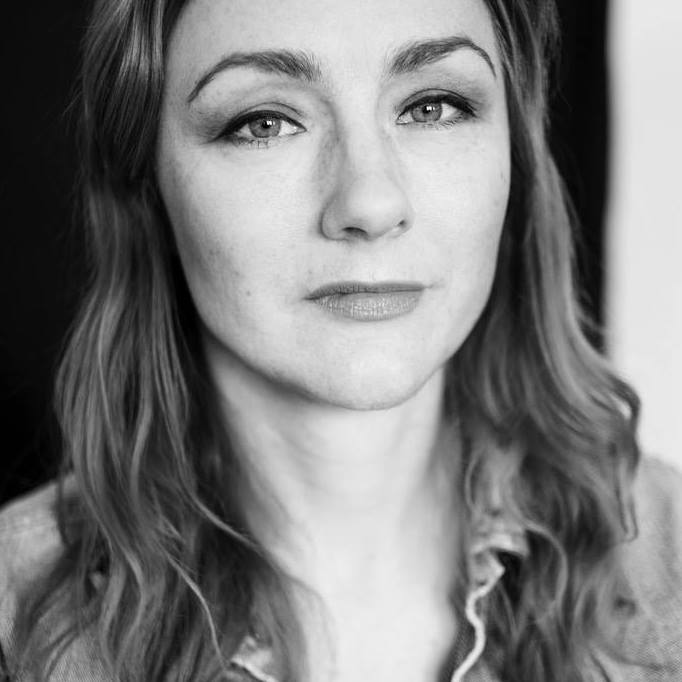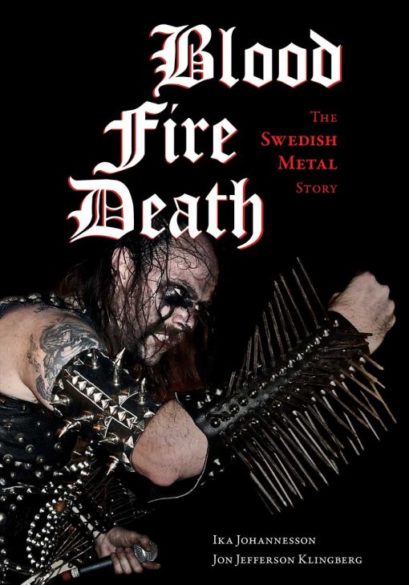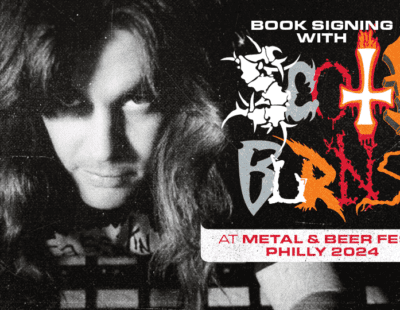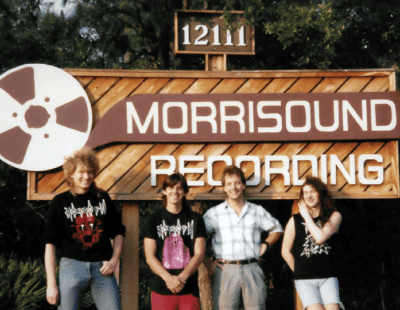
Blood Fire Death: The Swedish Metal Story is not simply one of the best books ever written on extreme metal, it’s among the finest, most captivating, stirring, disquieting, intimate, heartening, entertaining rock n’ roll tomes period. Seriously. It’s smart, nuanced, unpredictable, and teeming with amazing, fully realized character studies which instill a real, grounded humanity in these vessels that brought such otherworldly heaviness into the world. Even for those who have followed the scene for years parts of chapters on Nifelheim, Bathory, Pelle “Dead” Ohlin,” Entombed, and more will likely be revelatory.
In short, acclaimed Swedish music journalist Ika Johannesson and writer/Docenterna drummer Jon Jefferson Klingberg knocked this cultural history of a scene not exactly known for its accessibility or eagerness to pull back the curtain straight out of the park.
To borrow an old MTV tagline — You think you know…but you have no idea.
The incisive and wonderful Johannesson was kind enough to recently talk about the book, its subjects, and her process in the exclusive interview with Decibel below.
At the risk of sounding overly obsequious at the outset, pulling off something as ambitious, expansive, and beautifully actualized as Blood Fire Death, it seems to me, must’ve been a gargantuan task. How did the project come together? Did you always know it would be this expansive?
Had we known that it would take seven long years of research, interviewing and writing, maybe we wouldn’t have started the project at all! I get tired just thinking about it. But I’m glad it actually took that long, since we could capture developments over time, for example in the chapter about Pelle ”Dead” Ohlin. When we first contacted Pelle’s younger brother Anders – by simply calling everyone in Sweden named Anders Ohlin until we found the right one – the family had had no contact whatsoever with Pelle’s old friends or the members of Mayhem, since his death in 1991. It was still an open wound. Slowly, during the course of the work with the book, contacts were made, friendships were struck up and the Ohlin family got a bit of closure. To this day the old members of Morbid and their friends meet up with Pelle’s brothers once a year to party and celebrate his memory. It’s one of my favorite chapters in the book, for sure.
Tell me a little bit about your own experience with and relationship to Swedish heavy music as someone who grew up in Gothenburg.
I had the luck of being raised by a record collecting father, in a family where an interest in music and popular culture was encouraged. He had cassettes by Iron Maiden, Saxon and Motörhead, next to his Elvis and Bob Dylan. But my metal journey started in the very early 80’s with Kiss, introduced to me by my older neighbor Martin, a band my father never understood. Then we moved overseas to Singapore in the mid-80’s where more extreme metal was censored, so I didn’t hear Metallica or any kind of thrash until we moved home in 1988. I’d spent a lot of time on hair metal instead. After that, the quest for faster and harder music was impossible to stop. On the bus out to our suburb south of Gothenburg I befriended anyone with long hair, patches and a denim jacket and soon began hanging out with a gang of friends who all played in bands, tape-traded and either wrote in or collected fanzines. Death metal was pretty unknown and it felt like our own music. These friends ended up in bands such as Grotesque, Dark Tranquillity, In Flames and At the Gates. It was an amazing few years.
People open up to you in deep, candid, profound ways. I’m assuming your background helped establish that trust, but we are, nevertheless, talking about a scene which has always maintained a certain mystique — and hasn’t always been covered fairly. How involved was that process? Were there any strategies you developed to help sources believe your intentions were pure and about as far from sensationalistic as you can get?
I think it’s a combination of things. Me and Jon did a lot of the interviews together the first few years, then we divided the chapters up between us when it was time to really go deep. I ended up doing all black metal-related stuff, and Jon concentrated on the heavy and death metal stuff — partly because of personal interest, but also because we found that it was easier for me to approach the more extreme bands. Jon is a little older than me, born in 1968, and used to anchor a great heavy metal show on a cable channel in the 90’s and also used to play in the band Whale. We found that some young black metal men felt the need to challenge him in a very tiresome way. Being a — comparably pretty old — woman with my background in the scene made everything easier. I’ve also worked as a music journalist for Sweden’s major media outlets for a long time, and also published my own alternative culture magazine, so that made people trust us. If anyone questioned me I could always reply: “I was chugging beers at Tompa Lindberg’s 18th birthday party when you were in diapers, man.”
Also, I think people understood straight away what kind of book we wanted to make by our questions — for example, “Ok, so how did it feel to find the skull fragments of your close friend?” ”What did that violent environment do to you? How has it affected who you are today?” etcetera — instead of focusing on the spectacular stuff.

The original edition of Blood Fire Death came out back in 2011. Why was now the time to put out a new edition?
The Swedish edition was actually published by a company that historically has mostly published children’s literature. So we’re actually label mates with Moomin! But that also meant that their agent was really bad at selling the book. And both me and Jon were both so tired and fed up with the book that we didn’t have the energy to do it ourselves. A few years ago I was put into contact with Adam Parfrey at Feral House through a mutual friend, and when he said that he wanted to publish, we were ecstatic. I still can’t believe that it’s out. We’ve updated some of the chapters with foot notes, and rewrote the one on Entombed since so much has happened with them.
Sweden not only has the incredible metal history you detail, but also a similarly thriving and eclectic hardcore scene. Sometimes these things simply build upon themselves, of course — there is a synergy amongst creators. But your country does seem uniquely impactful regardless. That’s sort of a big, philosophical question, but do you have any idea why that may be?
That’s the thousand dollar question, isn’t it? There are a number of things that play into this. The state-financed culture programs and educational system that make sure that young people have access to free instruments and rehearsal spaces. The long, dark winters that forces you to find stuff to do indoors. The melancholia of the dark North. Swedes learn English in school very early, back in my day when we were ten years old, today they start at seven. It’s a small country that is open and turned towards the world. Then there’s the trailblazers. Sweden happened to have a few: Quorthon and Pelle Dead for the inspiration. Nicke Andersson and Tompa Lindberg to create a scene around them. I think all those things affected the scene in various ways.
The Angela Gossow quote that closes out the chapter “By Men, For Men” — which deals with how women have been treated in the scene—reads as strikingly prophetic today: “The generation emerging now has changed—that much is evident. The teenage girls who are 14 and 15 today are completely different; they’re a lot strong. Should they feel disrespected, they’ll say so.” Does that positive trajectory jibe with your view and experience? Has this cultural moment, with women demanding more respect and equal treatment, played out in the Swedish metal scene as well?
Yes it definitely has, there are so many more women at gigs today. On stage as well, although not very many. That chapter was very important to me, as I used to be one of the very few girls in our little scene. I was interested in what made me drawn to this music when so many other women wasn’t. And I distinctly remember the skepticism that we felt when other girls, especially the dreaded ”girlfriends”, tried to hang out with us. We were so used to having our interest in extreme metal being questioned, so we ended up questioning other women instead of being supportive. I know that this has changed, but I also know that females are still not naturally accepted in black metal circles for example.
What are you up to these days? Is another book in the works?
I’m currently hosting a culture talk show on Swedish national television and working on a few different books. One is a historical coffee table book on Swedish board games and the other one is a project somewhat like Blood Fire Death, but about another, closely related, music genre. Can’t say too much about that yet though!
Author photo by Anna Ledin Wirén.






